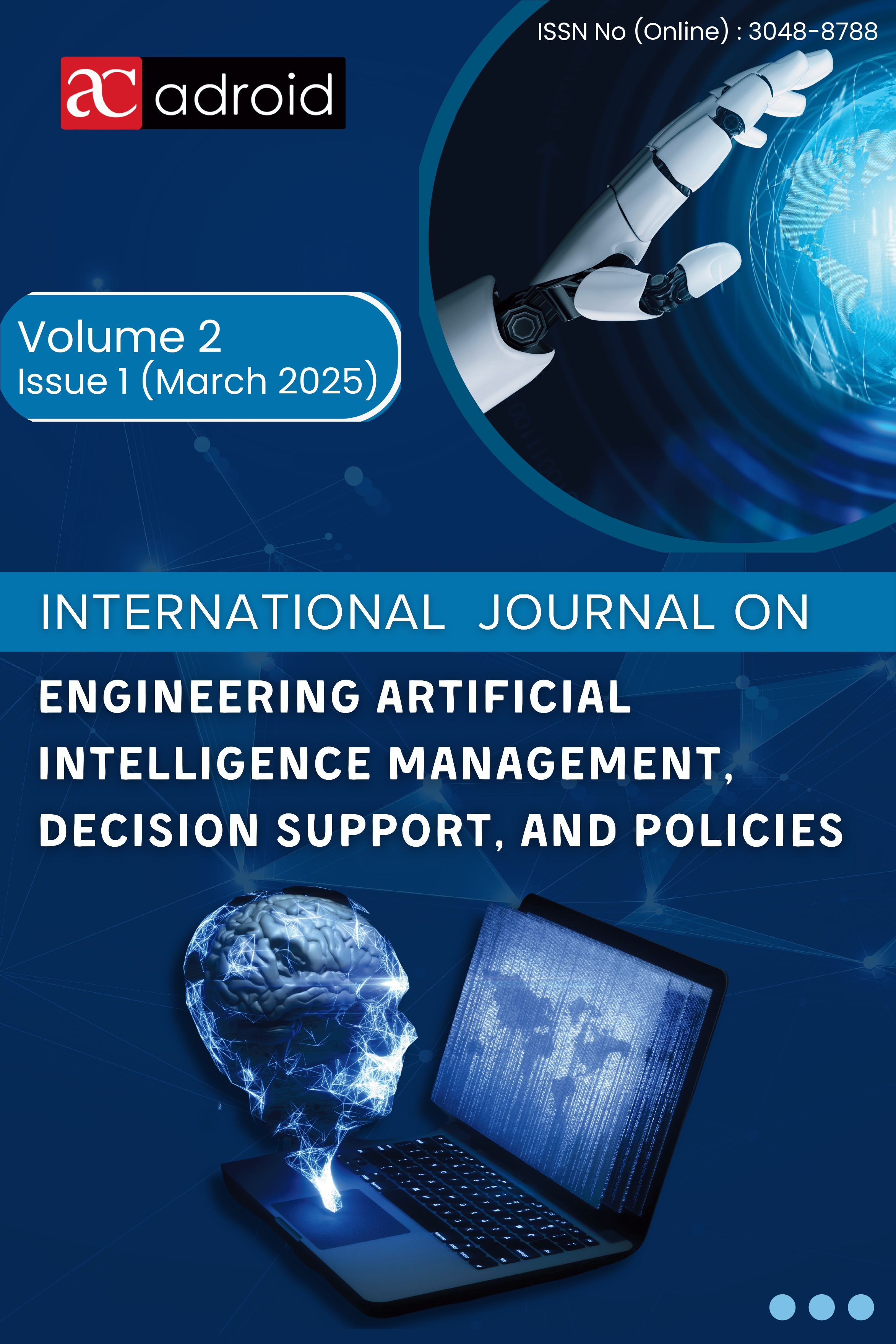Advanced Safety Systems: Seat Belt and Occupancy Detection using Attention Spik ing Neural Networks
DOI:
https://doi.org/10.63503/j.ijaimd.2025.37Keywords:
Attention Spiking Neural Networks, Vehicle Safety, Occupancy Detection, Seat Belt Detection, Traffic Safety, Spiking Neural Networks, Machine Learning, Autonomous VehiclesAbstract
The requirement for advanced safety systems in vehicles is incorporated to reduce road traffic accidents and improve safety. Determining whether passengers are using seats belts and whether the seat is occupied, are some of the key missions in making safety systems operational. The outcomes of old approaches as if sensor-based methodologies are not accurate and could not perform methods in real-time mode and are not reliable when the driving environment is complex and complicated. This paper presents Attention Spiking Neural Networks (ASNNs) as a solution to the challenges to implement our approach. Spiking neural networks, distinct for its biological-inspired processing, provides better temporal dynamics and computational cost for real time operations. The phenomenon of interest of this paper is the design of an ASNN-based system for identifying seat belt usage and occupancy in vehicles. The proposed model also including attention mechanism to attend certain features such as the occupancy of seat and the movement of people that affect decision-making system. A comparison with the traditional sensor-based and machine learning techniques is done to compare the performance enhancements. The findings discussed herein show that the utilized ASNN-based system enables higher accuracy, lower computational complexity, and improved robustness to dynamic conditions in real-time traffic scenarios. The high efficiency of the system also implies that the software can be implemented in
car-adverse environments that lack many resources.
References
[1] Md N. Khan, S. Das, “Advancing Traffic Safety through the Safe System Approach: A Systematic Review”, Accident Analysis & Prevention, vol. 199, no. 3, 2024.
[2] J. P. Ehsani, J. P. Michael, E. J. MacKENZIE, “The Future of Road Safety: Challenges and Opportunities”, The Milbank Quarterly, Vol. 101, no. S. 1, pp. 613-636, 2023.
[3] A. L. Guillen, M. L. Marti, R. Villarino, D. Girbau, “Seat-Occupancy Detection System and Breathing Rate Monitoring Based on a Low-Cost mm-Wave Radar at 60 GHz”, IEEE Access, vol. 9, pp. 115403-115414, 2021.
[4] F. Alonso, C. Esteban, S. Useche, N. Colomer, “Effect of Road Safety Education on Road Risky Behaviors of Spanish Children and Adolescents: Findings from a National Study”, International Journal of Environmental Research and Public Health, vol. 15, no. 12, 2018.
[5] A. P. Singh, et al., “Sorting and Path Finding Algorithm Visualizer”, International Journal on Smart & Sustainable Intelligent Computing, vol. 01, no. 02, pp. 40-48, 2024.
[6] J. Lu, et al., “A review of sensory interactions between autonomous vehicles and drivers”, Journal of Systems Architecture, vol. 141, 2023.
[7] Z. Yi, J. Lian, et al., “Learning rules in spiking neural networks: A survey”, Neurocomputing, vol. 531, pp. 163-179, 2023.
[8] Y. Man, et al., “Attention Spiking Neural Networks”, IEEE Transactions on Pattern Analysis and Machine Intelligence, pp. 1-18, 2023.
[9] U. Bhanja, et al., “Fuzzy Logic-Based Accident Detection System for Vehicular Ad Hoc Networks: A Prototype Implementation”, Wireless Personal Communications, vol. 138, pp. 291–320, 2024. https://doi.org/10.1007/s11277-024-11500-w
[10] A. Mohapatra, “Real-Time Traffic Congestion Prediction Using Predictive Data Analysis”, International Journal on Engineering Artificial Intelligence Management, Decision Support, and Policies, vol. 01, no. 02, pp. 18-32, 2024.
[11] H. Lu, H. Pan, Z. Sun, “Comparative review of advanced seatbelt detection: Infrared sensors vs. image-based systems”, Applied and Computational Engineering, vol. 53, no. 1, pp. 136-141, 2024.
[12] K. Yamazaki, V. Vo-Ho, D. Bulsara, N. Le, “Spiking Neural Networks and Their Applications: A Review”, Brain Sciences, vol. 12, no. 7, 2022.
[13] H. Wang, Y. Li, “Bioinspired membrane learnable spiking neural network for autonomous vehicle sensors fault diagnosis under open environments”, Reliability Engineering & System Safety, vol. 233, 2023.
[14] F. S. Martinez, J. Casas-Roma, L. Subirats, R. Parada, “Spiking neural networks for autonomous driving: A review”, Engineering Applications of Artificial Intelligence, vol. 138, 2024.
[15] Q. Meteier, et al., “Non-Intrusive Contact Respiratory Sensor for Vehicles”, Sensors, vol. 22, no. 3, 2022. [16] A. N. Onaizah, “Artificial Intelligence based Automated Sign Gesture Recognition Solutions for Visually Challenged People”, International Journal on Computational Modelling Applications, vol. 01, no. 1, pp. 45-62, 2024.
[17] G. Li, L. Deng, et al., “Spiking Neural Network Learning, Benchmarking, Programming and Executing”, Frontiers in Neuroscience, vol. 14, no. 276, 2020.
[18] L. Alzubaidi, et al., “A survey on deep learning tools dealing with data scarcity: definitions, challenges, solutions, tips, and applications”, Journal of Big Data, vol. 10, no. 46, 2023.
[19] E. Hassan, M. Y. Shams, N. A. Hikal, et al., “The effect of choosing optimizer algorithms to improve computer vision tasks: a comparative study”, Multimedia Tools Applications, vol. 82, pp. 16591–16633, 2023. https://doi.org/10.1007/
[20] L. Qui, J. Rao, X. Zhao, “Seatbelt Detection Algorithm Improved with Lightweight Approach and Attention Mechanism”, Applied Sciences, vol. 14, no. 8, 2024.
[21] Ch Sekhar, P. S. Meghana, “A Study on Backpropagation in Artificial Neural Networks”, Asia-Pacific Journal of Neural Networks and Its Applications, vol. 4, no. 1, pp. 21-28, 2020.
[22] A. Renner, et al., “The backpropagation algorithm implemented on spiking neuromorphic hardware”, Natural Communications, vol. 15, no. 9691, 2024.

